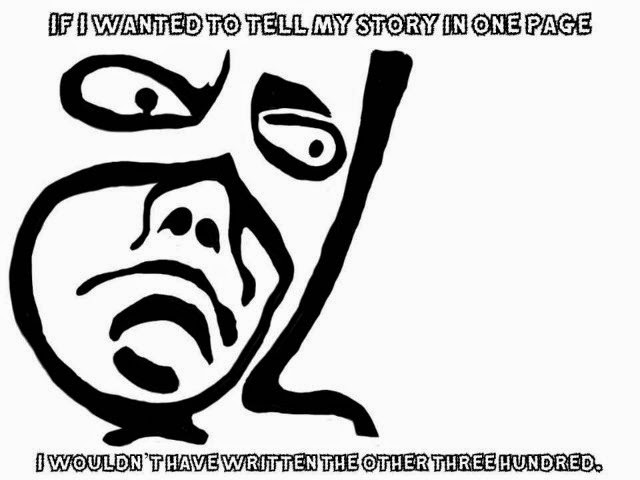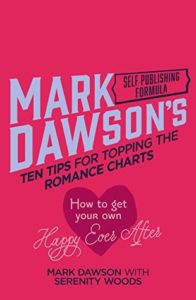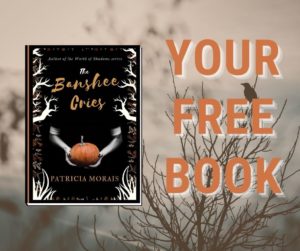Writing synopses!
Here is the ultimate story in the lives of authors that no reader should pay much attention to. The “behind the scenes,” so to speak, to which no one pays attention.
I say this because, at least until now, I never thought twice about it.
What am I talking about?
Well, that little text usually contained on the back cover of a book or on one of its flaps: the synopsis.
It is true that no one knows the work better than the author. It is they who know where the idea came from, why their characters act as they do, what will happen next, even before the idea is even proposed in the story. It is also they who know, better than anyone, the feelings of their characters and the message they want to convey with their story.
For all these reasons, who should be the best person to write the synopsis? The author!
So why does it seem like a monster with seven heads when the time comes?
For a long time, it was impossible for me to answer that question.
Part of me didn’t believe that the answer was 100% correct. Every time someone asked me, “Oh, you wrote a book? What is it about?” My answer was always a bit stuttered, full of hmm’s and ahm’s… “Paranormal fiction?” “Vampires and werewolves?” But that’s not really what I wanted to answer.
It is true that my book is contained within the genre of paranormal fiction or paranormal romance. And it is true that the vast majority of the characters are humans, vampires, and werewolves. In one way or another, that was the quickest and most generic description I could give about my work, but it didn’t do it justice. There is so much missing from that description.
In my opinion, my work exposes some of my greatest fears and the way I found to deal with them, some of my thoughts – altered to give them a content that would integrate into the story – and powerful messages. All of this cannot be described in sentences with only two words. But it also cannot be described in just one page that fits on the back of a book.
When we are presenting our work to a publisher, those who have already read advice about it should know that we must expose everything that happens in the story. It is a total summary. They are interested even in the end. But it would be horrific to do such a thing to readers. Nobody is interested in reading the summary first, knowing what happens in the end, and then going to read the remaining 300 pages, if they already know everything that happens that is important.
There is a very interesting image I saw about the subject that made me discover why I was feeling the way I was:

We spend months, sometimes even years, developing a story and now we’re asked to take 99% of that story and explain only 1%?
This led me to write two types of synopses. But in both, I realized, after seeing the synopsis suggested by my editor, that I was only describing the first two chapters of the story.
What did I learn after seeing the final synopsis?
Always start with a strong sentence. The first sentence should encourage the reader to read the rest of the synopsis. It shouldn’t make them yawn and decide to put the book down.
If possible, include something about the character’s personality. Something they desire that will shape the way they act throughout the story. This makes readers immediately feel like they know and even identify with the character.
Insert conflict and danger. Show that not everything in the story will be a bed of roses, without revealing anything important. Give readers a taste of the dangers the character faces.
In the first version suggested by the editor, these were the three points I realized were necessary.
Until I received a new email suggesting the addition of a new line: the “romance factor.” For many (especially if they are boys or not very romantic people), it may not be very important, but let’s be honest: there are books that were written thousands of years ago and, for some reason, only became successful when someone decided to adapt the story and add romance to the mix. Whatever genre we read, there is always some romance mixed in. It may not be the main message being conveyed, but it’s there…
And with all of this, here’s the synopsis of my book that will be available on the Coolbooks, Porto Editora website on November 28th:
“Lilly Ashton couldn’t imagine a more perfect life than hers, until the terrible night everything changed.
The only way she finds to survive the tragedy is to do what she’s always wanted: be impulsive.
She distances herself from everything and everyone when she moves to Jillian and decides to study Folklore and Mythology, but quickly finds herself in a race to save her own life when she discovers that the monsters hiding under the bed really exist.
To ensure her survival, she joins Diabolus Venator, the demon hunters’ organization in that small town, where she meets Liam, the mysterious young man who infuriates and surprises her every day. But not everyone fighting with her has the same goal, and the danger she faces may be greater among those around her than in the battle against demons. In a world where legends are real, who can Lilly trust?”
Did you like it?
If you think this post helped you better understand how to write synopses or if you have more examples that I didn’t cover, leave a comment!
PATRICIA MORAIS
I write bilingual (PT and EN) supernatural fantasy books inspired by mythology and folklore from around the world. But my actual mission is to help other writers write, publish and market their books.




